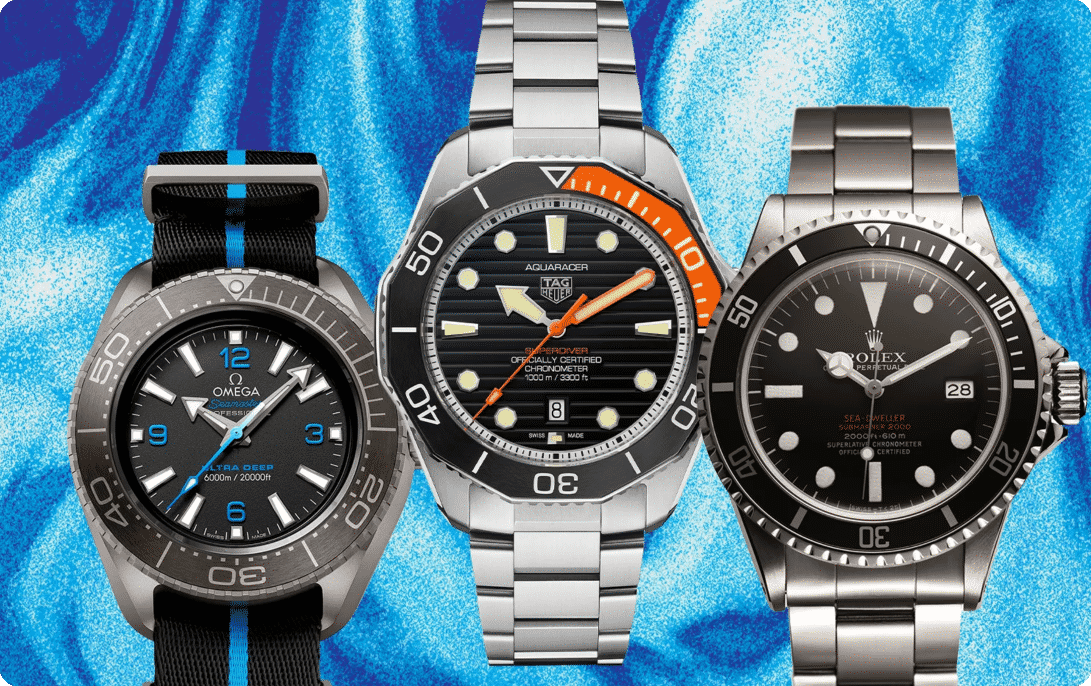
Of all the new products released at the Watches and Wonders in Geneva earlier this year, this was one of the hardest to miss. The name alone speaks volumes: the Aquaracer Professional 1000 Superdiver. It’s a big name for a large 45mm watch, with a dodecagonal black and orange bezel, a stout strap, a garage door-sized helium escape valve, and A bright arrow-style hour hand with enough fluorescence to read Proust in the dark, even at 1,000 meters underwater. With a large, brutish crown protector and a relatively thin thickness (by deep dive watch standards) of 15.75mm, the message is clear: TAG Heuer is back in the extreme dive watch market.
The Super Diver was a project on the minds of TAG Heuer CEO Frédéric Arnault, although it was born out of setbacks. An avid skier, golfer, chess and tennis player, Arnault is also an experienced diver. “When I joined [TAG], I was approached to sponsor someone who wanted to go deep-sea diving,” he said. “I thought, ok, that’s cool and consistent with our ‘don’t collapse under pressure’ mantra. But if we’re doing something like this, we need a watch that can go deep. And we don’t have that product”.

Now TAG Heuer has it. The Super Diver is just the latest in the company’s long history of pushing the limits of ultra-deep diving watches. And this iteration just brings the Swiss watchmaker back to where it was when the 1000-meter diver debuted in 1982. At the time, a kilometer underwater was quite remarkable, putting it within reach, but still 220 meters behind the most iconic extreme diving watch: the Rolex Sea-Dweller.
When the Sea-Dweller was introduced in 1967, Rolex had been diving deep for 15 years. In 1953, off the southwest coast of Italy, an experimental Rolex submersible was anchored to the outside of a submersible and dived to a depth of more than three kilometers. That achievement was overshadowed in 1960, when the same ship dived 10,916 meters in Challenger Deep (the deepest point known to Earth’s seabed) in the Pacific Ocean’s Mariana Trench, with another experimental Rolex dangling from its hull. . Although the watch is equipped with a crystal that resembles a transparent ping-pong ball, making it unsuitable for everyday wear, the feat has captured the world’s attention. When offshore oil exploration was at its height in the 1960s, the Sea-Dweller became the default timer for the underwater elite.